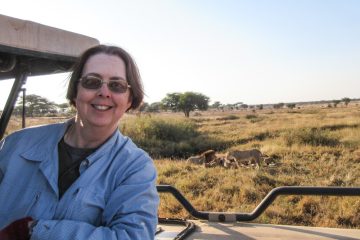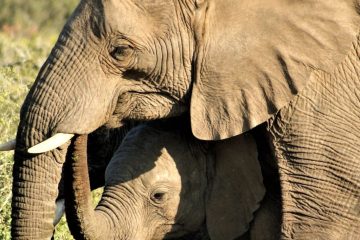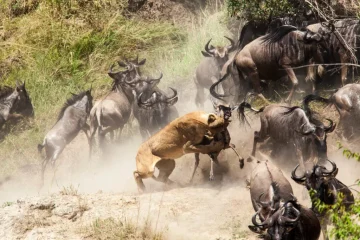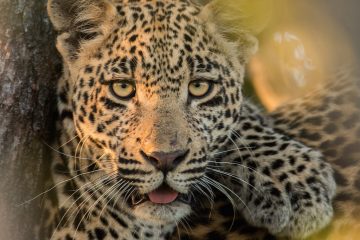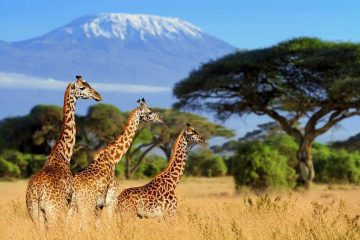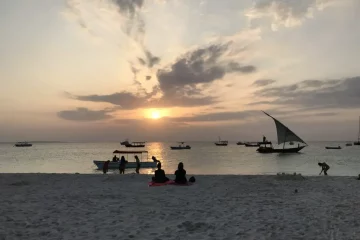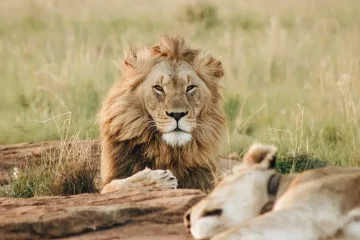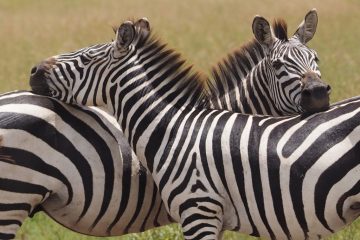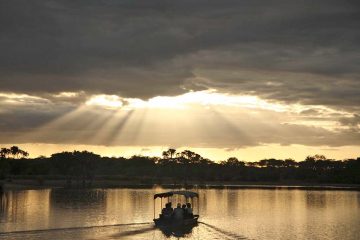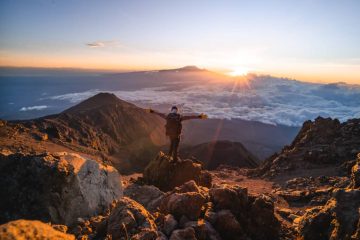Combining a Kilimanjaro Climb and Safari: What You Need to Know
If you’re planning a trip to Tanzania to climb Mount Kilimanjaro, why not combine it with a safari? Tanzania is home to some of the world’s most incredible wildlife, and a safari is the perfect way to experience it. Here’s what you need to know about combining a Kilimanjaro climb and safari:
Best Time for this Kilimanjaro and Safari Trip
The best time to climb Kilimanjaro is during the dry season, which runs from June to October and from December to February. The best time for a safari is from June to October, which is when the wildebeest migration takes place. If you want to combine a Kilimanjaro climb and safari, the best time to go is from June to October.
Tranquil Kilimanjaro offers more combo options like:-
Choosing Your Safari
Tanzania offers a variety of safari options, from luxury lodges to budget camping trips. Here are some of the most popular safari destinations:
- Serengeti National Park: The Serengeti is one of the most famous wildlife reserves in the world and home to the wildebeest migration. It offers luxury lodges as well as camping options.
- Ngorongoro Crater: The Ngorongoro Crater is a UNESCO World Heritage site and one of the best places in Africa to see the “big five” (lion, elephant, leopard, buffalo, and rhino). It offers luxury lodges as well as camping options.
- Tarangire National Park: Tarangire is known for its large herds of elephants and baobab trees. It offers luxury lodges as well as camping options.
Getting to Kilimanjaro and Safari Destinations
Most climbers start their Kilimanjaro climb from Kilimanjaro International Airport (JRO). Many safari operators offer airport pick-up and drop-off services from JRO. Some safari destinations, such as the Serengeti, can be reached by small aircraft from JRO. Others, such as Ngorongoro Crater and Tarangire National Park, can be reached by car.
Safety Considerations
It’s important to choose a reputable tour operator for both your Kilimanjaro climb and safari. Make sure they have a good safety record and are experienced in the areas you’ll be visiting. It’s also important to follow all safety guidelines provided by your tour operator and to listen to your guide’s instructions.
Conclusion
Combining a Kilimanjaro climb and safari is a great way to experience the best of Tanzania’s natural wonders. By timing your trip right, choosing the right safari destination, and taking safety precautions, you can have the adventure of a lifetime.
Best Safaris near Mount Kilimanjaro
Some of the best safari parks to visit after your Mount Kilimanjaro climb include world-class destinations and attractions in the Northern Circuit of Tanzania. The Serengeti, Ngorongoro Crater, Kilimanjaro National Park, Lake Manyara, Tarangire National Park, Arusha National Park, Olduvai Gorge, and Mkomazi National Park are all part of Tanzania’s Northern Circuit. Below are some of the destinations you could visit for a safari after your Mount Kilimanjaro challenge.
Visit the Serengeti National Park, home of the Wildebeest Migration
Serengeti National Park is our top pick for the perfect destination to visit after climbing Mount Kilimanjaro. A World Heritage Site and one of the world’s most renowned animal conservation regions, is a “must-see” on any Tanzanian safari. The park is fittingly called after the Maasai term for “endless plains,” with a total area of 14,763 sq km. You may expect to see the “Big Five” (Lions, Elephants, Rhinos, Leopards, and Cape Buffalo) as well as a variety of other famous and lesser-known animals. Many Serengeti animals are continuously on the move due to the wide landscape, weather patterns, and migratory patterns of the numerous species. This will make for an exciting gaming drive!
The park’s geography spans from long and short grasses to open plains in the south, acacia savanna in the middle, mountainous, more thickly forested landscapes in the north, and vast woodland and black clay plains in the western corridor, all dominated by the center ranges of mountains. The plains are studded with rocky outcrops known as “kopjes,” and the park is crisscrossed by many rivers, including the Seronera in the center, the Grumeti in the western corridor, and the Mara in the north. The variety of sceneries will leave you in amazement for a long time.
The Serengeti’s birds are equally as beautiful and diverse as the larger creatures, with eagles and vultures, ostriches, secretary birds, kori bustards, hornbills, guinea fowl, and a plethora of lesser birds among them. The park has almost 500 bird species, including some that migrate from Europe and Asia during the winter months—truly a fantastic area for birding.
Visit the Ngorongoro Crater for the rare Rhinos
The Ngorongoro Crater is a unique protected region in which people (the Maasai) and wild animals live in peace. In the vast and beautiful crater, there is a significant permanent population of wild animals. The biggest submerged ancient caldera in the world, Ngorongoro, is officially a “caldera.” The once-volcanic Ngorongoro is now regarded as one of “Africa’s eighty marvels,” with an estimated age of three million years. It is, in our opinion, one of the world’s greatest treasures.
The Crater floor also referred to as the “Garden of Eden,” is a natural sanctuary for thousands of animals, including wildebeest, over 200 lion prides, zebra, elephants, hippos, hyenas, Thomson gazelles, African buffalo, crocodiles, ostriches, and a variety of birds, not to mention one of the best spots to see an endangered Rhino. A trip to Ngorongoro is a necessity, and it’s a fantastic site to combine with a Maasai village culture tour.
Visit Lake Manyara to see flamingos and tree climbing lions
For its size of 325 square kilometers, Lake Manyara National Park is a beautiful and incredibly diversified park (125 square miles). The park is known for the dramatic changes in its landscape, which range from a shallow soda lake with flamingos to acacia woodland with large concentrations of baboon troops, giraffe and elephant herds, and a birding paradise with over 400 bird species to the Great Rift Valley escarpment with its famous tree-climbing lions. There is also an underground water forest in the park.
Lake Manyara is a fantastic stopover on the way to the Serengeti or a fantastic short safari in and of itself for those on a tighter schedule.
Visit Tarangire National Park, large elephant herds, and giant baobabs
Tarangire National Park, a wonderfully picturesque park, is home to an incredible diversity of wildlife and is known for its elephant population. Tarangire gets its name from the Tarangire River, which runs through the heart of the park from the south to the northwest, eventually emptying into Lake Burungi. Tarangire National Park is part of the broader Tarangire-Manyara Ecosystem, which spans 35,000 square kilometers. This park offers a really spectacular experience, from the stunning savannah vistas (for which the park is justly famed) to the huge number of Baobab trees that provide home for a varied range of birds and bats.
Tarangire is situated in an arid region that enables the establishment of a woodland savannah dominated by Acacia, Terminalia, Combretum, and commiphora species. Riverine woodlands, Acacia tortilis park land, wetlands and seasonal flood plains, acacia-commiphora woodlands, riverine grasslands, combretum-dalbergia woodlands, acacia drepanolobium woodlands, rocky hilltop (kopjes) vegetation, deep gully vegetation, and grasslands with scattered Baobab trees are among the most notable vegetation types in the area. In the Tarangire-Maasai Steppe environment, the Park provides as a dry season sanctuary for the bulk of migratory species. There are around 550 bird species in the park.
The open Acacia woods, the wetland (Silale Swamp), and the flood plains of the Tarangire River have particularly abundant bird life.
Visit Olduvai Gorge, the cradle of mankind
The Olduvai Gorge is where humanity began! Dr. Louis Leakey, a prominent archaeologist, discovered some of the oldest fossil hominid bones here in the early twentieth century. This visit provides a suitable education for the future in a smaller, multicultural world, with the ongoing quest for an answer to where we come from and what we are, culturally and physiologically. Olduvai provides us with a deeper grasp of our evolutionary history, ensuring our species’ future prosperity and well-being.
The term Olduvai comes from a typo of Oldupai, the true Maasai word for this historically significant location, which was called for the many wild sisal plants in the canyon. The gorge is a steep-sided canyon that stretches for 30 miles (48 kilometers) and is 295 feet (90 meters) deep. The sediments, according to paleoanthropologists, include a diverse fossil fauna dating from around 2,100,000 to 15,000 years ago. While on your Northern Circuit trip, stop by this notable archaeological site in the eastern Serengeti Plains, which is administered by the Ngorongoro Conservation Area Authority.
Visit Arusha National Park
From the wooded foothills of Mt Kilimanjaro to Arusha National Park, the trek is simpler than you may expect. It’s a magnificent park with some of East Africa’s most beautiful landscapes. Within the park’s limits are Mt Meru, which rivals Mt Kilimanjaro in terms of grandeur, Ngurdoto Crater (also known as Little Ngorongoro), and Serengeti Ndogo, a stretch of wildlife-rich grasslands (Little Serengeti).
Blue monkeys and black-and-white colobus monkeys, as well as giraffes, elephants, zebras, red duikers, waterbucks, bushbucks, klipspringers, dik-diks, buffaloes, and hippos, may be seen on safari here.
You may also go kayaking, search for some of the 400 different bird species, and go to Mt Meru’s peak.
Visit Lake Natron and Oldoinyo Lengai
On the map, it may appear that these two little-visited places are too far apart, but a shortcut to Lake Natron off the Arusha-Nairobi route makes them a good match. A journey to the isolated Crater Highlands is such a pleasant change of pace from many of Tanzania’s other safari locations.
For starters, Lake Natron is one of the greatest sites in East Africa to observe large flocks of pink flamingos, and the scenery around the lake is sure to inspire. Ol Doinyo Lengai, located just beyond Lake Natron’s southern side, is one of Africa’s most magnificent peaks.
Climb it if you want, but no matter where you are in the vicinity, you’ll be attempting to catch a sight of the peak known to the Maasai as the “Mountain of God.”
Visit Mkomazi National Park
Visiting Mkomazi necessitates letting go of safari preconceptions as well as the crowds. The bulk of safari vehicles zoom past, although this is primarily due to Mkomazi’s lack of popularity as a safari destination. The Mkomazi experience is still intact, with amazing views of Mt Kilimanjaro and the lovely Usambara Mountains, which are surrounded by high rocky slopes, baobabs, and arid grasslands. Topis, eland, zebra, and giraffe are nearly always present.
The park’s arid environment is also ideal for spotting desert-adapted, highly sought animals such the fringe-eared oryx, lesser kudu, and gerenuk (the gazelle that longs to be a giraffe). Birdwatching is also fantastic in Mkomazi, where over 400 species have been documented. Enclosures for reintroduced black rhinos and African wild canines, with the goal of eventually releasing them into the wild, give every visit here more seriousness.
Visit West Kilimanjaro, land of the Maasai
West Kilimanjaro is a distinguished safari destination that surrounds the western foothills of Mt Kilimanjaro. A safari may include cultural experiences, animals, and breathtaking vistas here, but without the crowds, you’d find elsewhere. Between Kenya’s Amboseli National Park and northern Tanzania, the region is an important corridor for elephants migrating and lions dispersing, and witnessing these and other famous animals in the natural, sparsely populated terrain in these sections may be a great highlight.
This is Maasai territory, part of a vast heartland that stretches from northern Tanzania to southern Kenya. But here, it’s more about meeting Maasai tribes on their own terms, away from the crowds. Most importantly, the unobstructed mountain vistas of Mt Kilimanjaro, Mt Meru, Mt Longido, and the Crater Highlands to the west are among the greatest in Tanzania. It’s an emerging safari destination with a handful of remote and luxury tented lodges in the region that won’t stay a secret for long.
FAQs
Do I need special gear for both the Kilimanjaro climb and safari?
Yes, you will need different gear for both. Make sure to research the gear requirements for each activity and pack accordingly.
Can I climb Kilimanjaro and go on a safari on the same trip?
Yes, many tour operators offer combined Kilimanjaro and safari packages.
Is it safe to climb Kilimanjaro and go on a safari?
Yes, as long as you choose a reputable tour operator and follow all safety guidelines.
How long should I plan for a combined Kilimanjaro and safari trip?
Most combined trips last between 10-14 days, but it depends on the length of your Kilimanjaro climb and safari.
What wildlife can I expect to see on a safari in Tanzania?
Tanzania is home to a variety of wildlife, including lions, elephants, leopards, buffalos, rhinos, giraffes,


